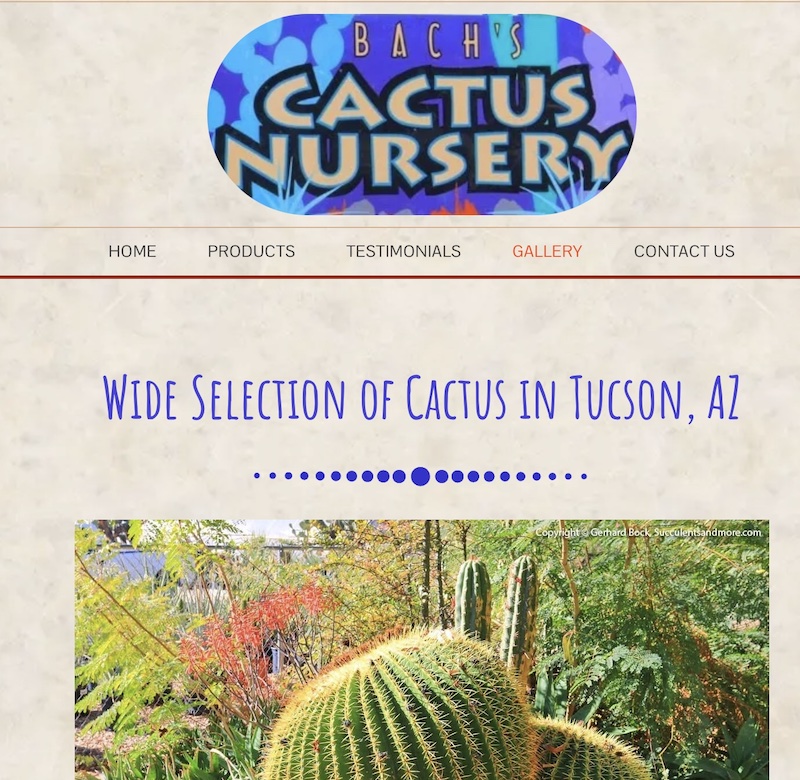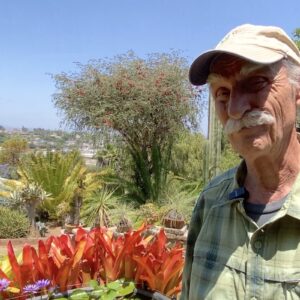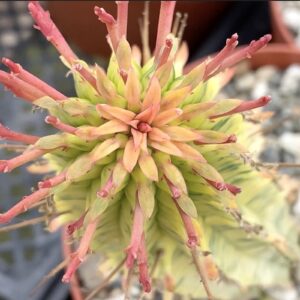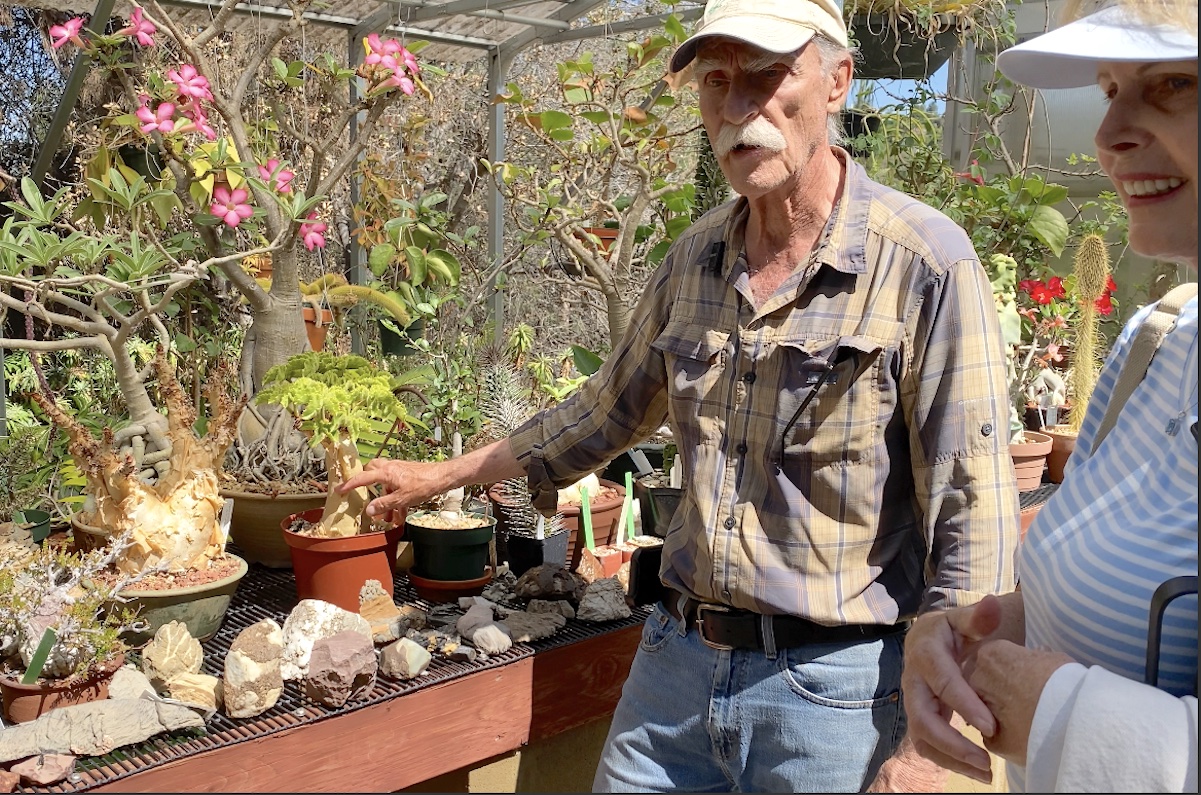
Secrets to Healthy, Happy Fat Plants (Pachyforms)
In my latest video, renowned succulent expert Julian Duval shares his secrets to keeping fat-trunked, potted succulents healthy and happy for decades. Such stout-stemmed succulents are pachyforms ---a term that includes pachycauls and caudiciforms. Julian, a lifelong plant enthusiast, is former CEO of the San Diego Botanic Garden.
This video is a sequel to my previous tour of Julian's Vista, CA garden, which encompasses several acres of rare tropicals and succulents large and small.
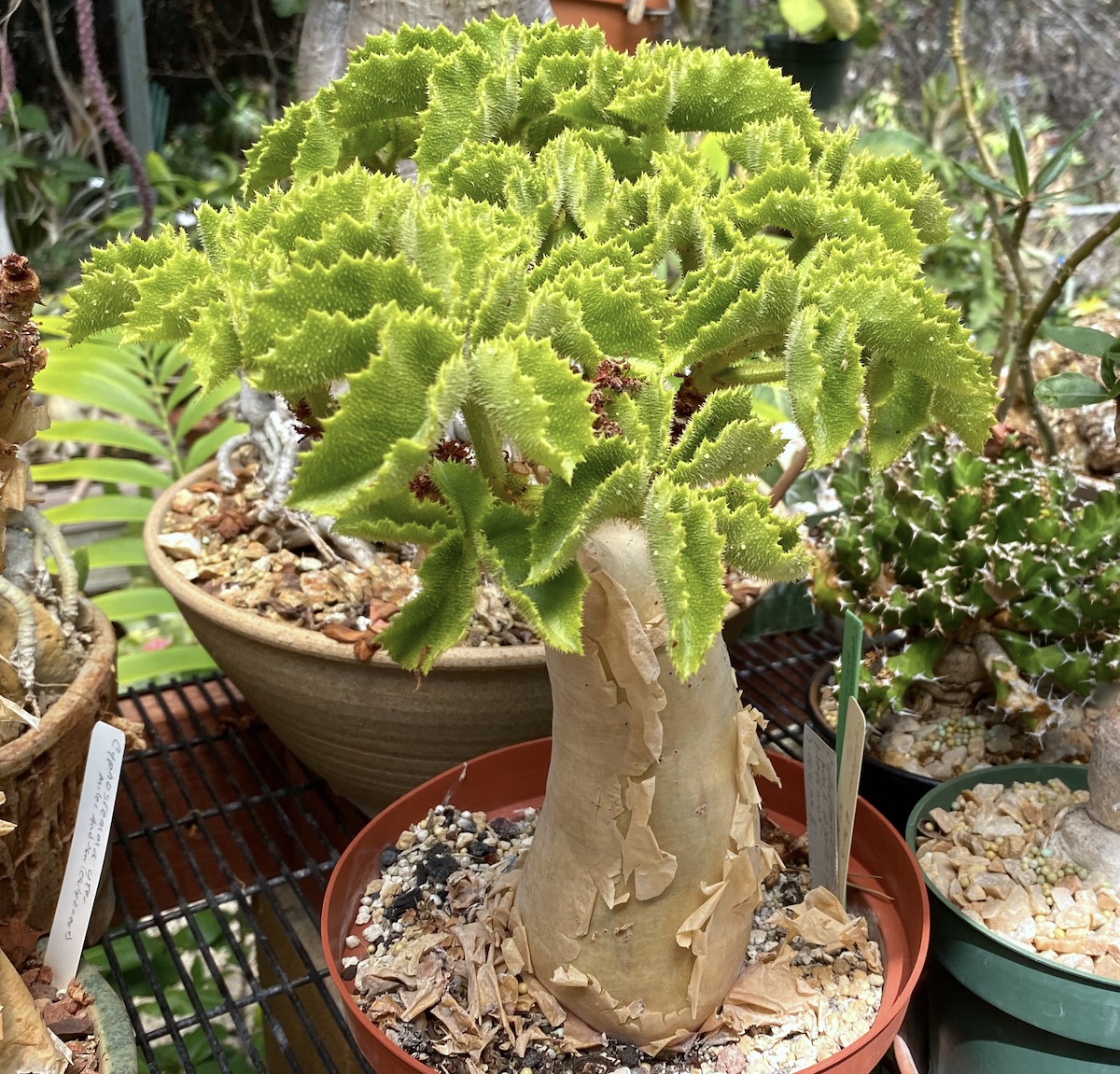
Cyphostemma uter, acquired 1989.
Many of Julian's bonsai'd pachyforms are decades old.
In the video I give the country of origin for each fat plant. It's fascinating to know which are right next door (Mexico) and which are from, say, South Africa or the Arabian Peninsula.
The "tincture of time"
When asked how his fat-stemmed rarities earn ribbons at Cactus and Succulent Shows, Julian says, "It's the tincture of time. If you keep a plant long enough, it turns into something wonderful."
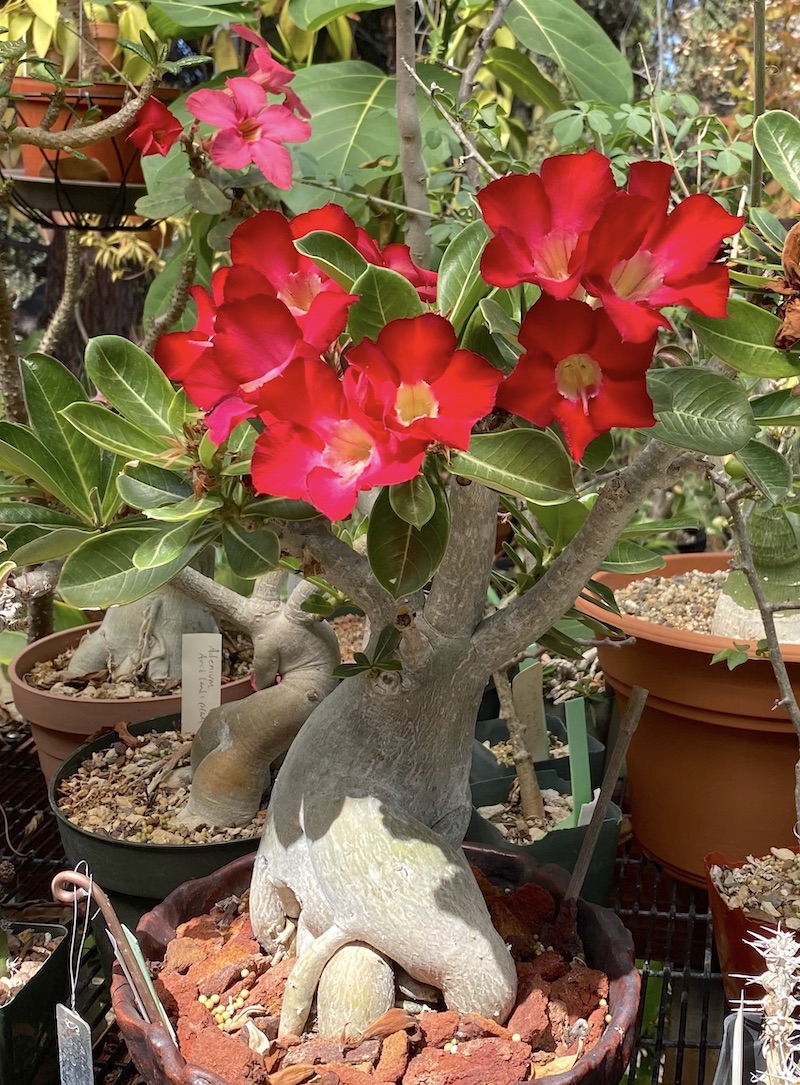
Adenium obesum cultivar
Could you do this yourself? Certainly. Start now! Years pass quickly, and the joy of these plants is minimal effort---providing of course you observe a few guidelines.
For example, they tend to stay small unless you speed them up. To help his pachyforms attain show-worthy size, Julian suggests you...
Give roots more room
Roots with ample space promote growth of branches, leaves and larger trunks. Julian first grows pachyforms in the ground, a raised bed, or a large (20-gallon) container. In a few years, when the plant's size pleases him, he transplants it into a show-worthy, artist-designed ceramic pot.
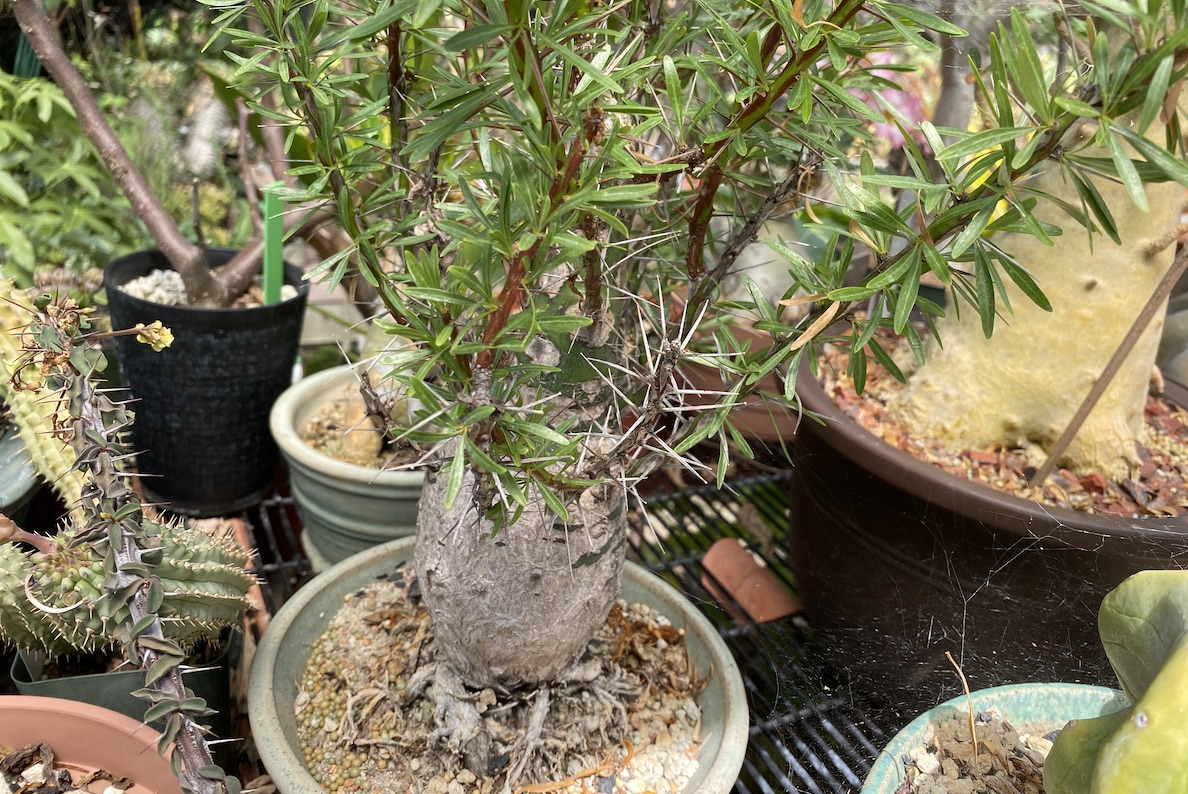
Fouquieria purpusii
Bonsai succulents that impress judges at Cactus and Succulent shows tend to be large in proportion to their pots. Note: Such plants are not true bonsai, which is an ancient tradition with strict guidelines, and is mainly about miniaturizing woody trees and shrubs.
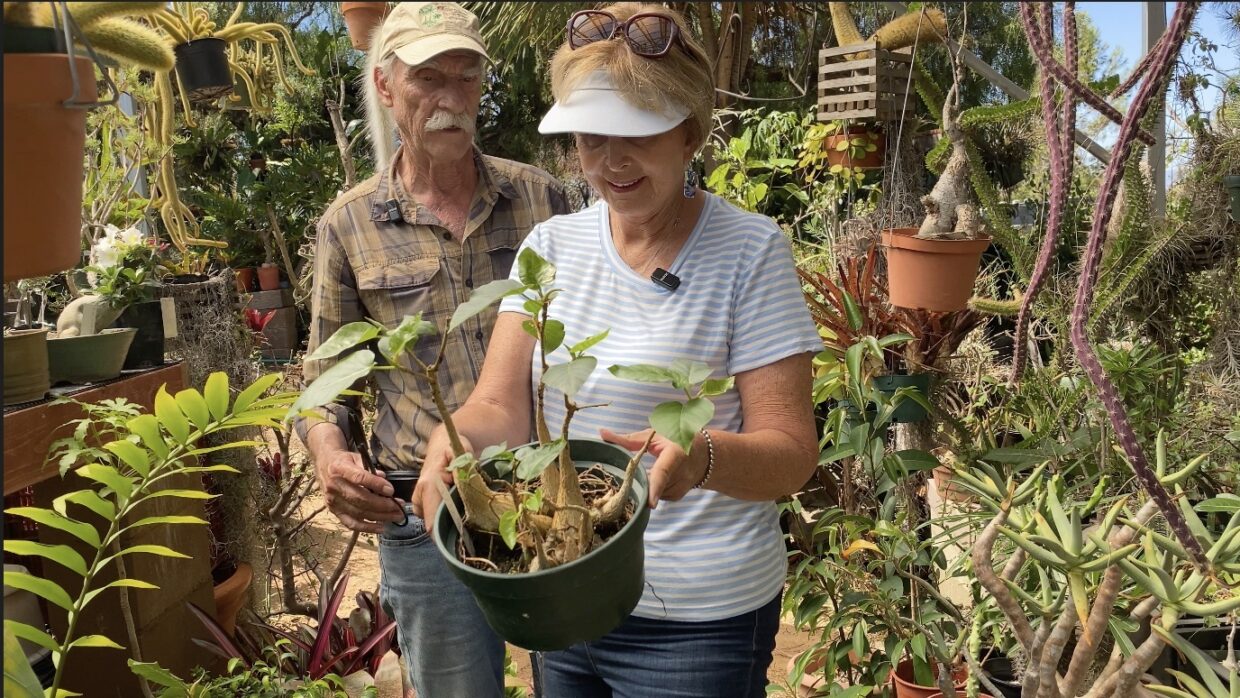
Ficus seedlings pre-bonsai
The ever-engaging Julian---who prior to retirement was often on TV---shows us his favorites, gives their ages, and explains what he finds fascinating about them.
Does it harm pachyforms to expose their roots?
When repotting potential bonsai specimens, succulent collectors elevate topmost roots above the soil. Why? They're too interesting not to show off! Collectors compare revealing the roots to opening a gift. Each set is unique.
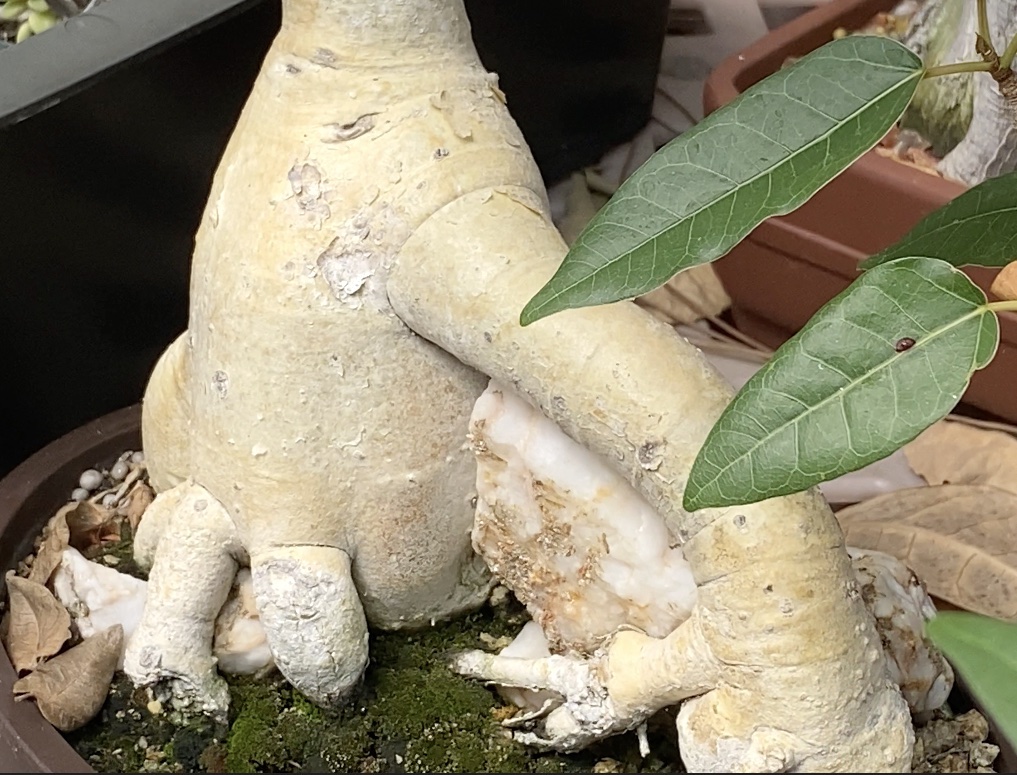
Julian trained roots of this bonsai'd Ficus palmeri to grow around a rock
Granted it's an acquired taste, but once you uncover roots that suggest sausages, eels, or reclining nudes, you'll be hooked.
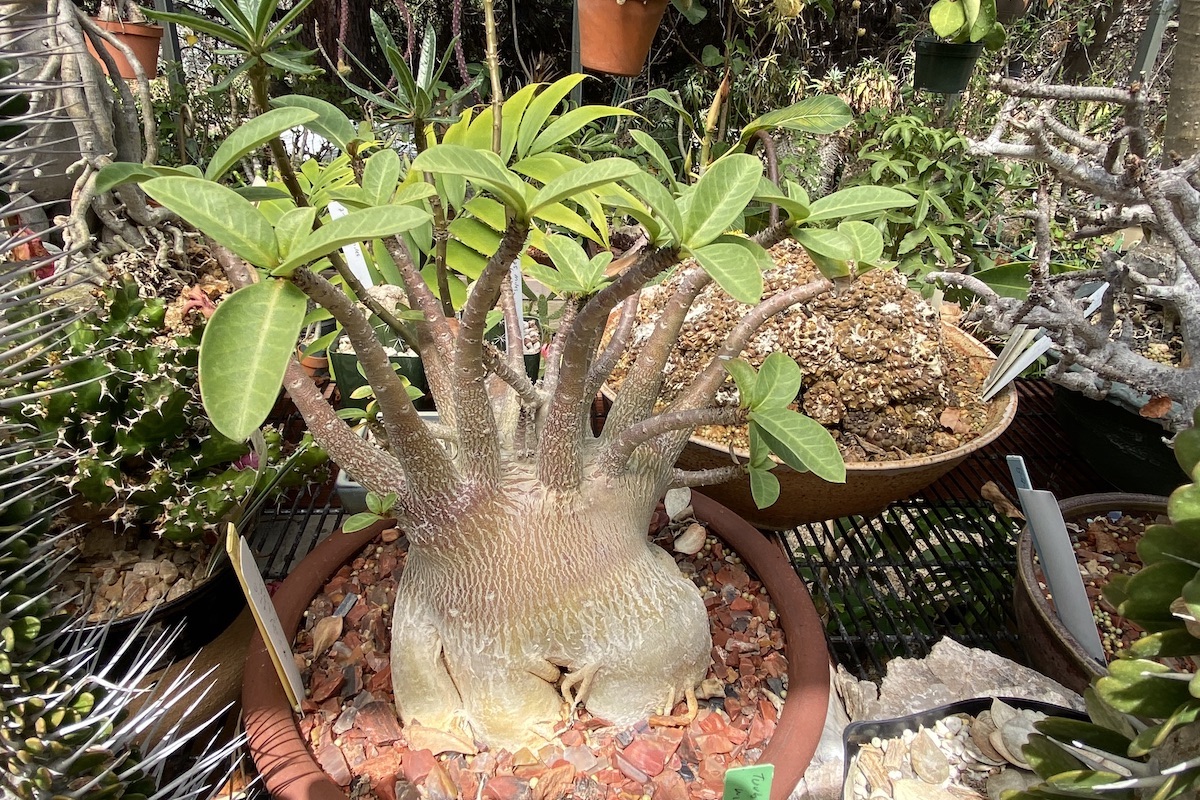
Adenium arabicum
Because roots were in darkness, at first they'll need sun protection. Bulbous exposed roots soon harden off, match the color of the trunk, and appear to be a seamless extension of it. Most collectors snip stringy, straggly roots to better showcase larger, more dramatic ones.
Winter-dormant summer-growers
Here in Southern California it’s challenging to cultivate succulents from regions of the world with dry winters and rainy summers---often true of the stout-trunked varieties that collectors prize. CA's rainy season is October through April.
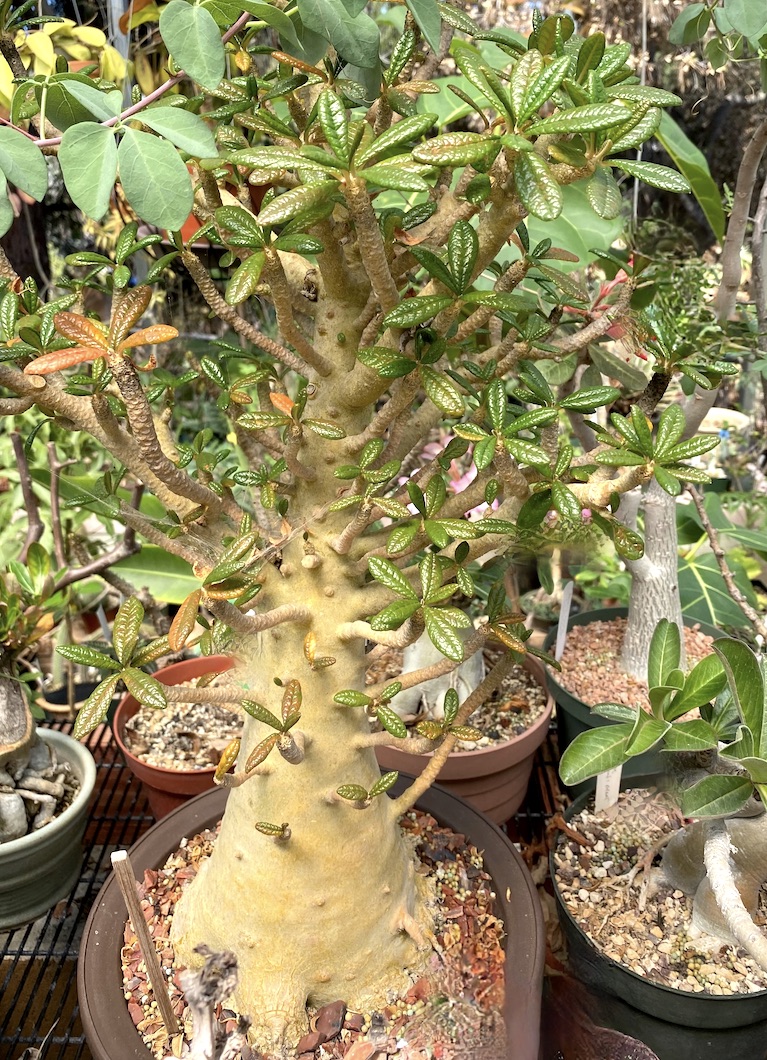
Dorstenia gigas on a table in Julian's "plant port" rain shelter
Pachyforms are sensitive to cold and wet while sleeping (can you blame them?). During winter dormancy, they're vulnerable to rot---one reason they're uncommon in CA.
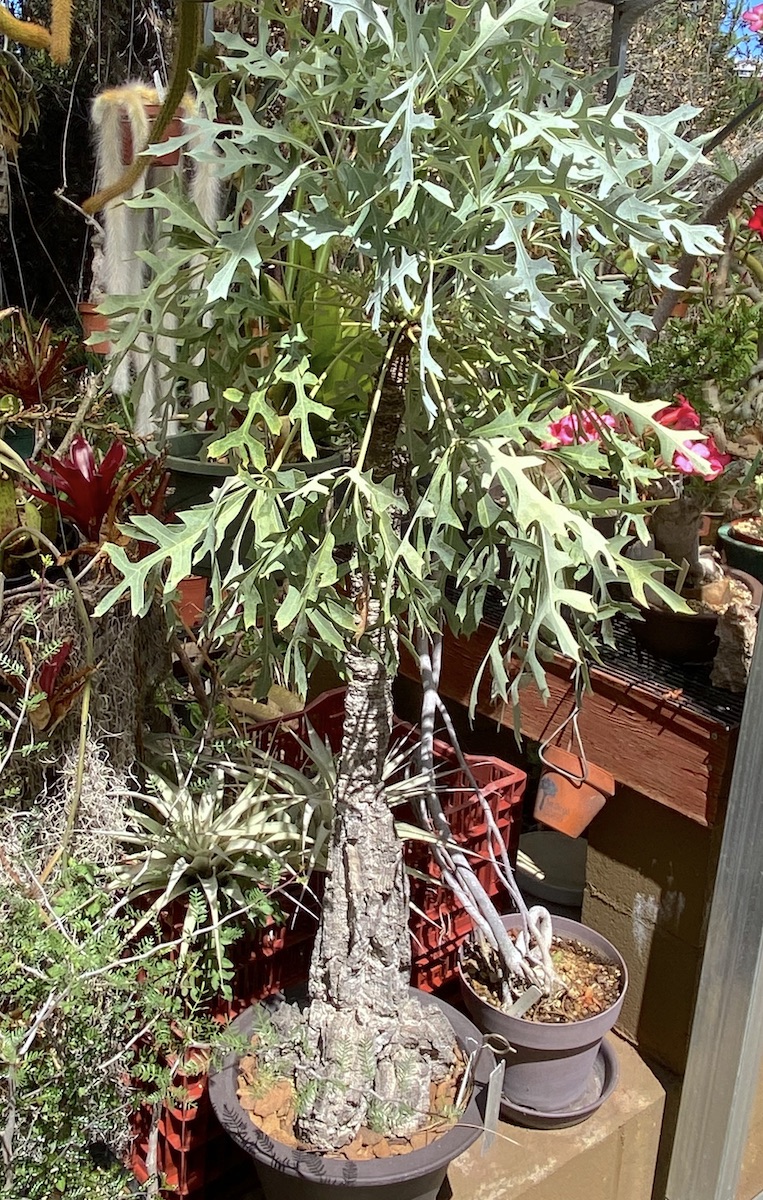
Cussonia paniculata
How does Julian keep pachyforms happy and healthy for decades?
Through trial and error, he's learned which have to be sheltered, and the best soil mix for rot-prone roots.
His "plant port" structure serves as an umbrella to keep winter rain from soaking potted, bonsai'd, winter-dormant summer-growers.
Julian notes: "Of course, not all plants fall neatly into categories. Some are more adaptable. For instance, in central Baja, many plants are primarily winter growers---but the area also receives occasional monsoon summer rains."
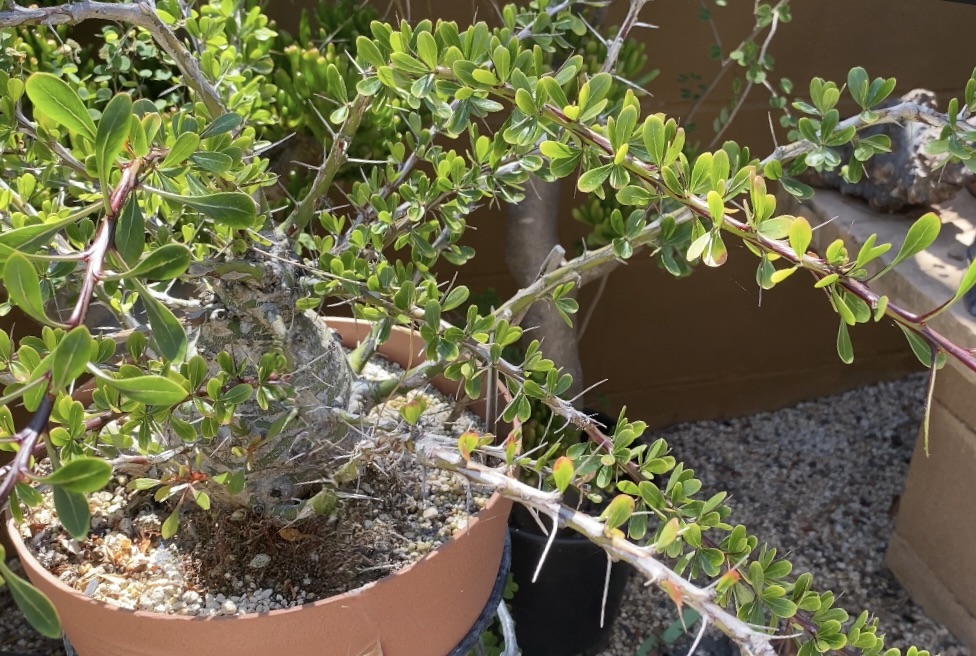
Fouquieria fasciculata
He adds that succulents in small pots shouldn't be allowed to go bone dry. "Give a little water in winter for summer growers and some water in summer for winter growers," he advises.
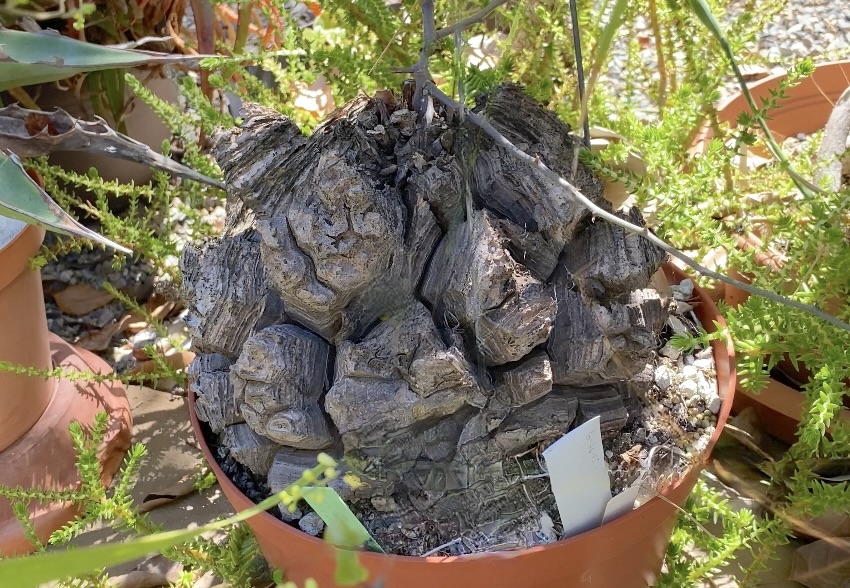
Dioscorea elephantipes
It also helps that Julian's area is frost-free. (There's more about his locale in the first video.) Potential bonsai pachyforms that can handle some winter rain and temps into the 40sF---such as ficus and beaucarneas---start as cuttings in large pots. As roots spread, top growth takes off.
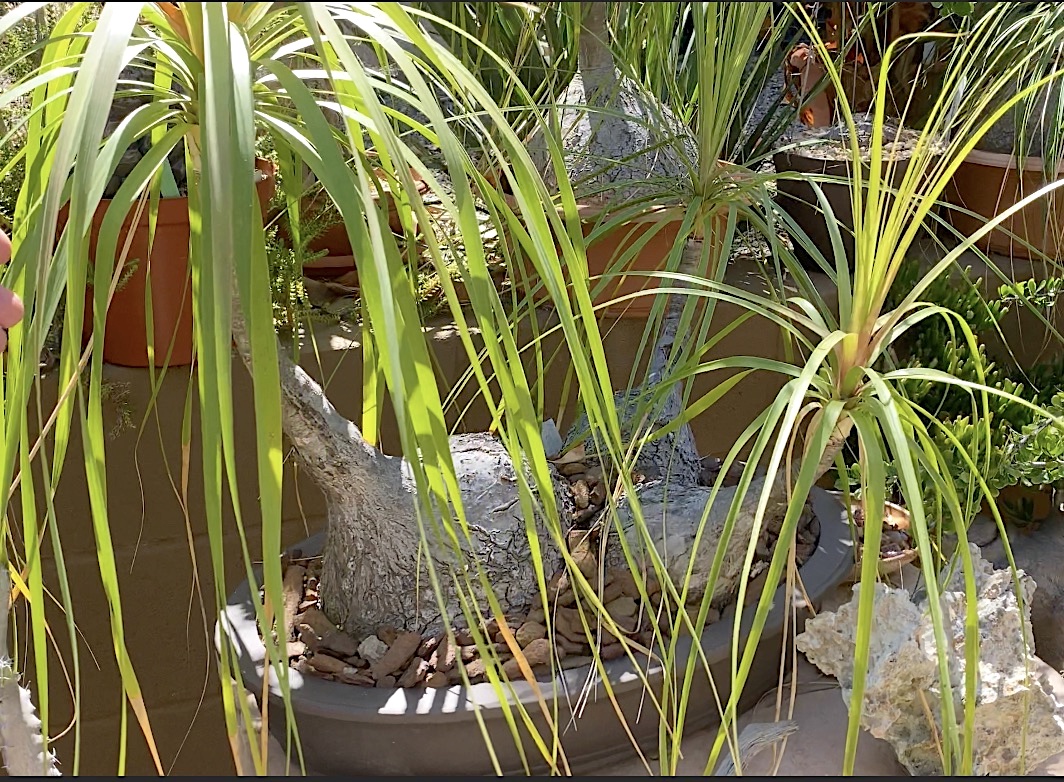
Beaucarnea recurvata trio in a bonsai pot
Julian uses 20-gallon nursery pots ("tubs") filled with nutrient-rich, fast draining soil.
Start them in a raised bed
A terrace Julian filled with decomposed granite (DG) and coarse river sand allows summer-growing, winter-dormant pachyforms---such as adeniums and cyphostemmas---to grow in the open garden year-round. “I want them BIG,” Julian says.
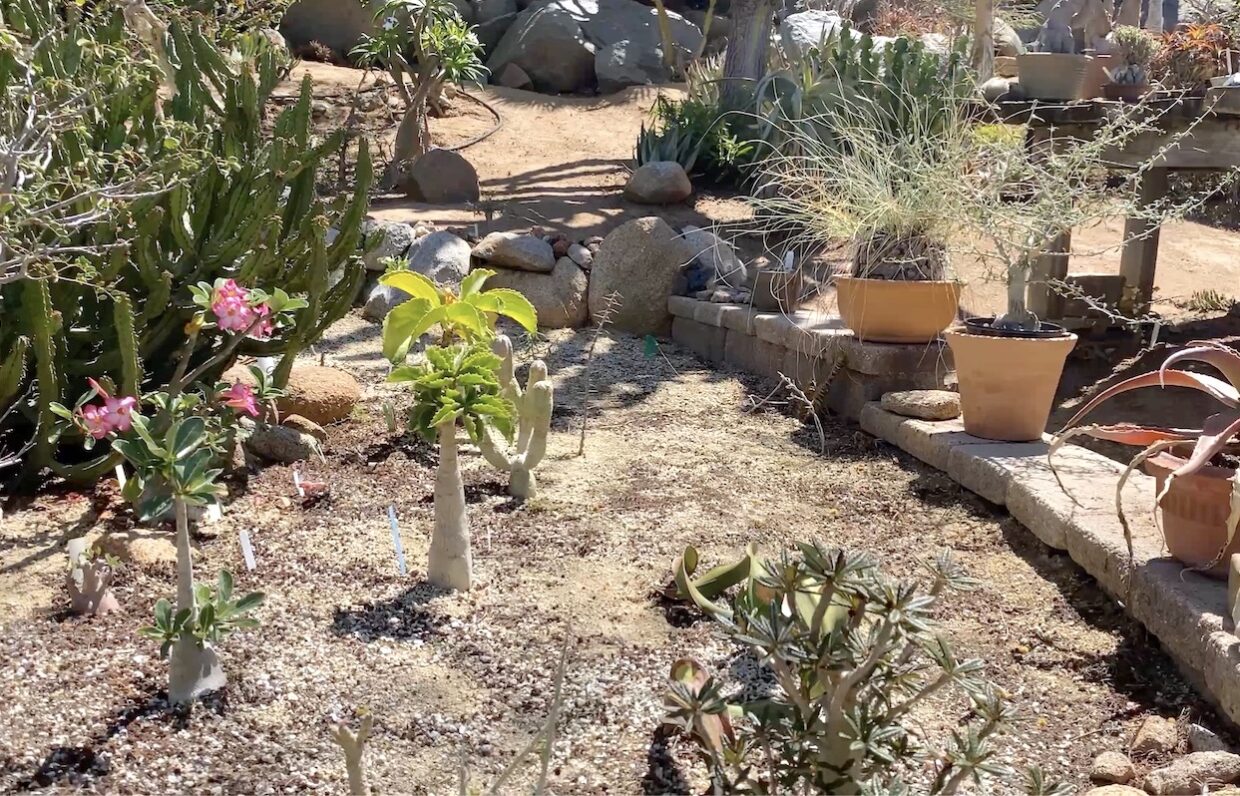
Julian's raised bed
The bed protects roots from excessive rain, because DG drains rapidly. In the video you'll hear him say, "This one has gone through four winters," and, "you never know what they'll do until you try."
Julian says: “My raised bed is approximately 3/4 commercial decomposed granite and 1/4 washed or builders sand. Turns out the commercial DG had too much dust in it, so if I were to do it over, I would probably use maybe half pumice with the DG. But the pumice would need to be washed to get rid of most of its dust, which becomes almost like concrete. That also goes for pumice in potting mixes.”
Julian does a deep dive into soil
Soil that drains well is essential to all succulents' survival. Clay soils found in much of Southern CA drain poorly, and soils with organic matter tend to retain water. DG offers good drainage but is nutrient-poor.
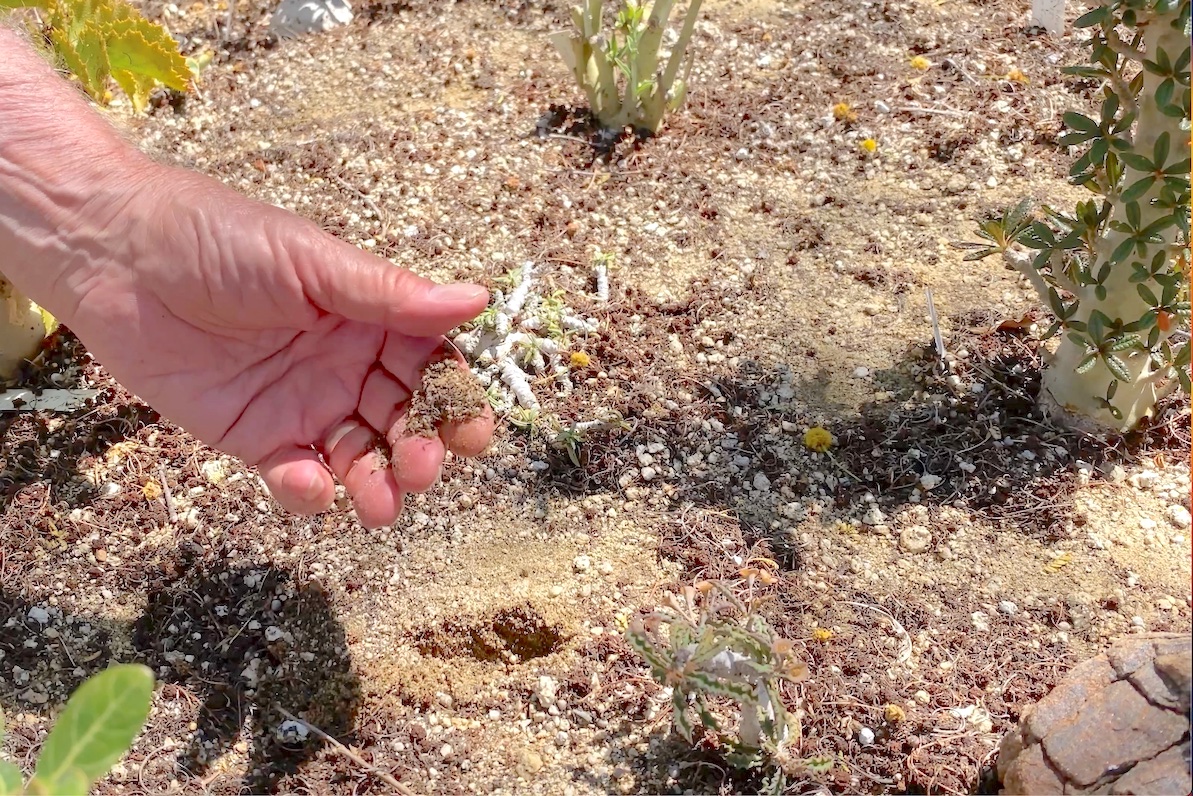
The soil in Julian's raised bed is a fast-draining, gritty mix of DG and pumice.
Julian says: “A good soil mix depends on many factors. It astonishes me how different growers achieve results with such a wide variety of different mixes for the same plants. If I were a commercial grower, I would have a standard mix. As I have lots of individual plants, even among pachycauls, I do a lot of ingredient tweaking.
“Depending on how xeric-adapted a plant is, my primary inorganic ingredients---pumice and Turface---make up to 75%, with coir as the organic component.
“A big factor in considering how well-draining a mix should be is how often you water. The size and shape of a pot also factor in. Many of mine are in pots that are small relative to the size of the plant. For some, I may add a bit more water-retaining material such as coir. An alternative to coir is peat.
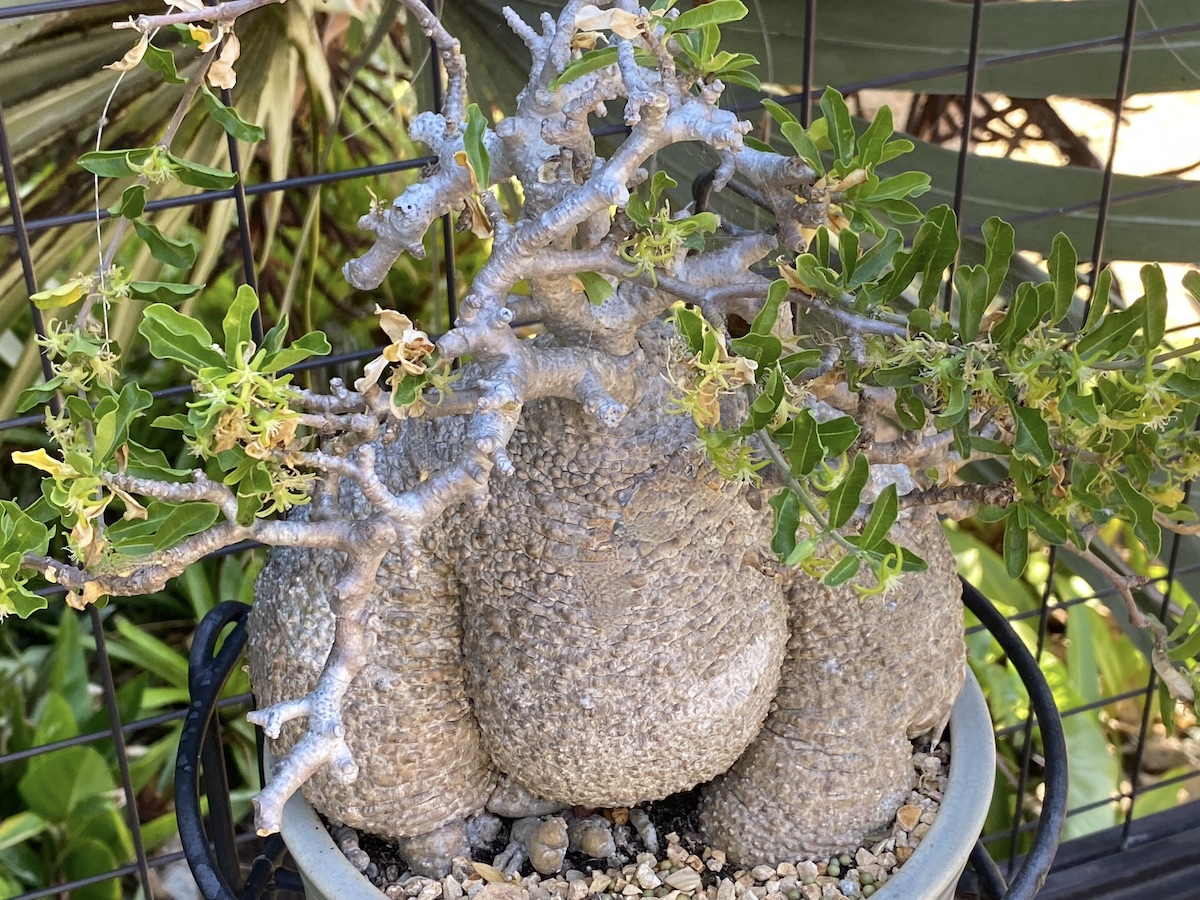
Fockea edulis
“I’m not only tweaking mixes for individual plants, I’m also still learning. For the longest time I had an aversion to perlite. Mostly because I didn’t like the way it made a mix look. Not that it’s a sound reason. But recently I’ve beginning to use it.
"Turns out perlite has the capacity to maintain air space (which is important to almost all plants) while also retaining moisture. Feeder roots need water to uptake essential nutrients. Pumice and the commercial product Turface do this too, but perlite holds more moisture.
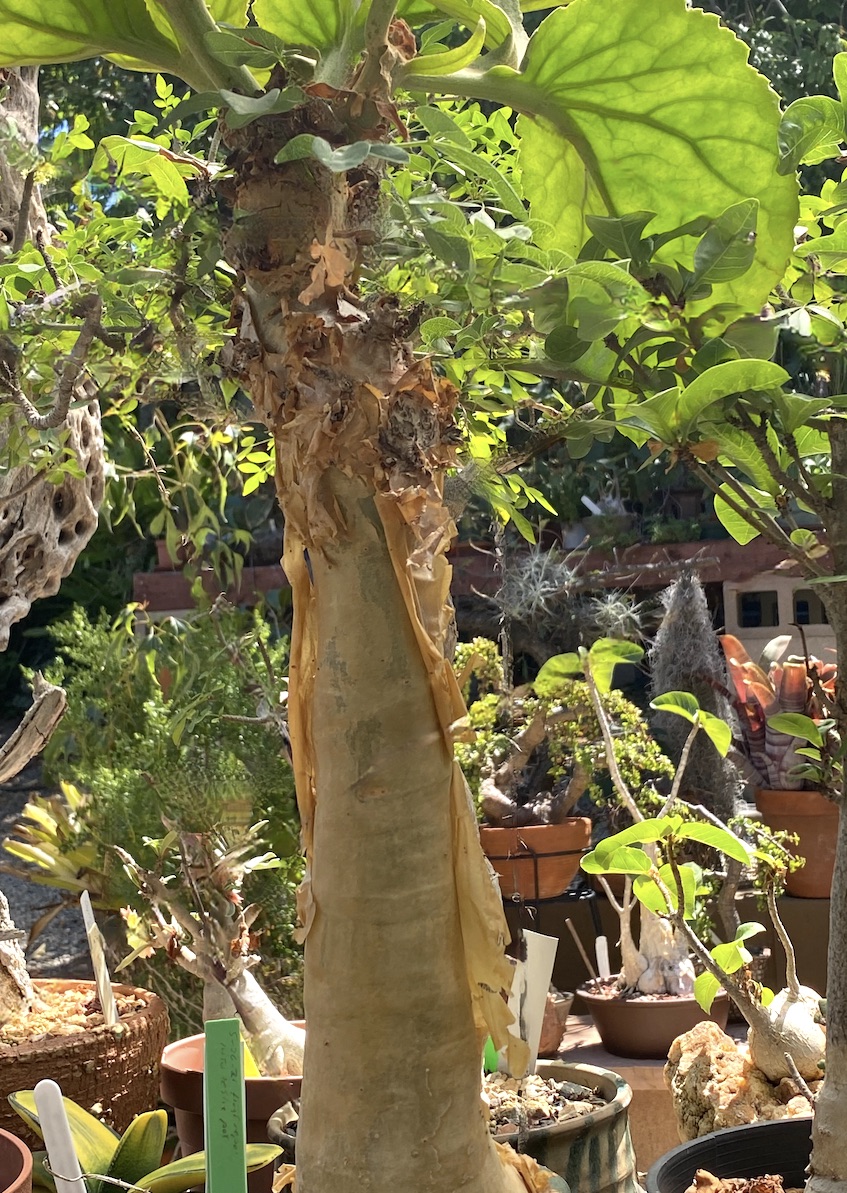
Cyphostemma currorii
“Just to confuse things even more, sometimes I also use ingredients that bonsai practitioners use, like scoria, akadama and coarse silica sand."
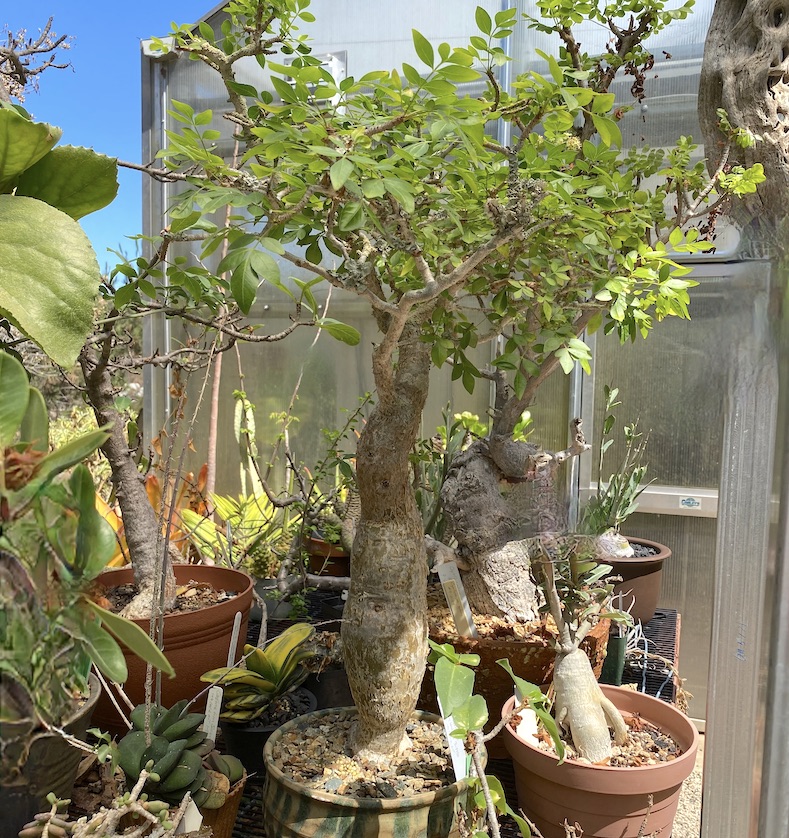
Bursera fagaroides
What about fertilizer?
“That’s a lot easier to answer," Julian says. "I use slow release Osmocote or Nutricote. Osmocote releases nutrients on contact with moisture; Nutricote, with warmer temperatures."
About those plant tags
Throughout the video, you'll see Julian pull tags out of pots to check a plant's name, its nursery of origin, and its date of acquisition. Some go back to when he lived in Indiana ages ago.
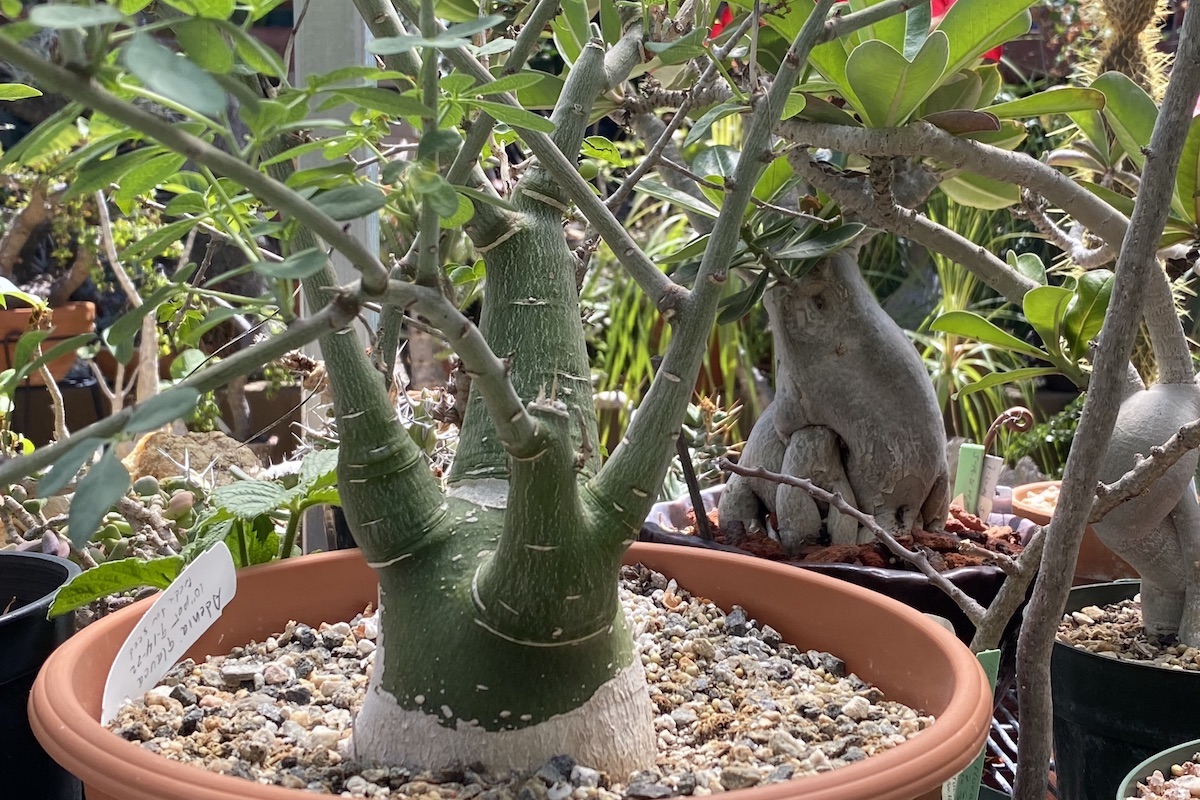
Adenia glauca
How do his nursery tags not deteriorate nor become illegible?
“Plant tags are a challenge," Julian says. "I’ve tried many different approaches. Pencil is still best for non-fading. But you still have to use a tag that is UV-impervious, or it’ll crumble over time. My attempt with metal Venetian blinds failed. I probably should try vinyl Venetian blinds.
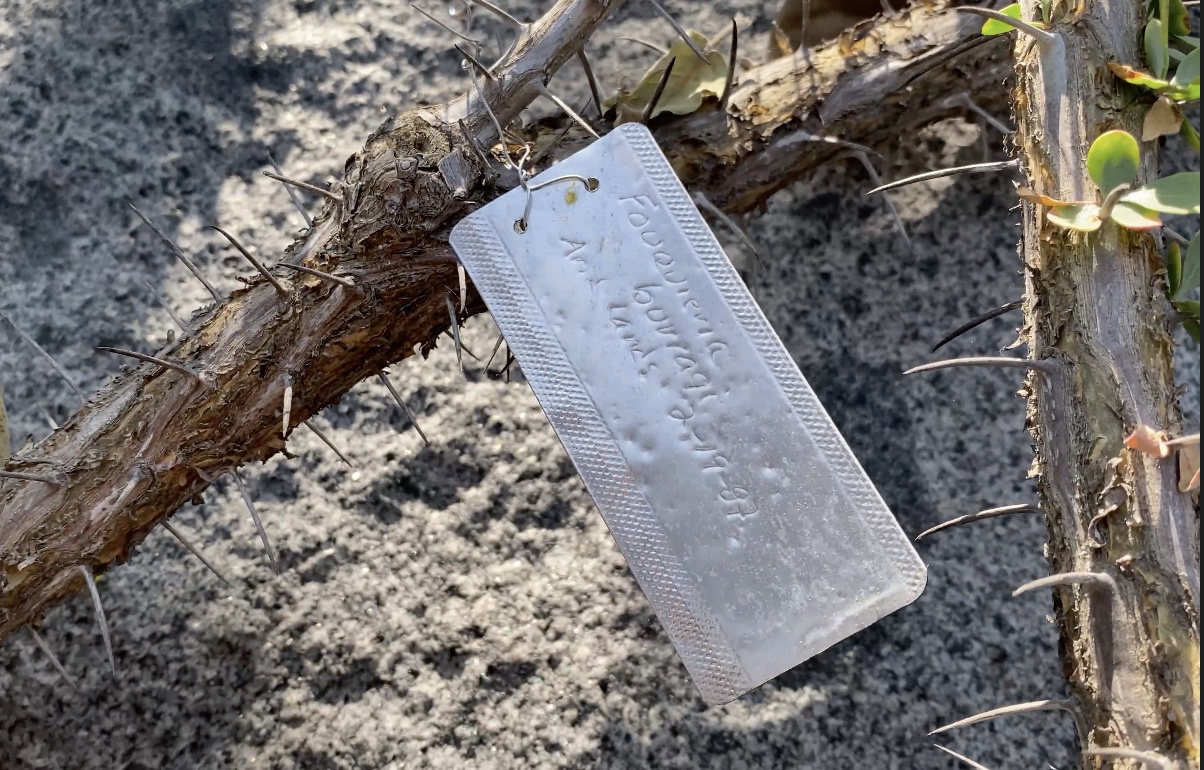
An aluminum plant tag reads: "Fouquieria bourragi, Arid Lands, 2-19-87"
“My current longer-term tags are aluminum that you emboss with a pen. But even those oxidize with time. If you can keep them from getting wet, they'll last longer."
Nurseries and experts Julian mentions
Julian often references the source nursery, grower or expert from whom he got a plant. These include:
Bach’s Cactus Nursery, 8602 N. Thornydale Rd., Tucson, AZ. Family owned for 40 years. Over 11 acres of growing ground and greenhouses. Large selection of adeniums, agaves, aloes, columnar cacti, opuntia, yuccas, and soft succulents.
Botanic Wonders nursery, Sarver Lane, San Marcos, CA. Online sales; open to the public by appointment. Founders Al Klein and Anthony Neubauer specialize in odd, rare and collectible cacti, pachyforms, and bonsai. See my YouTube tour with Al, the article/gallery on this site, and my succulent bonsai how-to video with Anthony.
Dimmit Adeniums, Mark Dimmit, Tucson. Premier source of Adenium cultivars.
Phyllis Flechsig, retired owner of a nursery in Encinitas, CA. Phyllis is renowned among members of the San Diego Cactus & Succulent Society.
Dave Grigsby: Original owner of long-time, now-defunct (but still famous) Grigsby Cactus Gardens, Vista, CA.
Dylan Hannon: Curator of the conservatory and tropical collections at the Huntington Botanical Gardens, near Pasadena, CA.
Miles' to Go nursery, Miles Anderson, Cortaro, AZ. Succulent rarities, mail-order and bare-root. Ariocarpus, astrophytums, stapeliads, mammilarias, and more.
Did you miss my first Julian video?
Here you go:
Related info on this site
Discover Julian Duval’s Personal Botanic Garden
You’re about to tour the garden of one of San Diego’s most endearing and knowledgeable plant experts: Julian Duval, retired CEO of the San Diego Botanic Garden. In my new video, you’ll see rare and unusual plants in pots, in the ground, and in an 18 x 24 greenhouse that Julian calls “a walk-in terrarium.”…
Visit Botanic Wonders & See Al Klein’s Succulent Rarities
You think you like succulents? Al Klein of Botanic Wonders nursery calls them “an addiction.” Al is a comet on the cactus and succulent scene. It seems he’s everywhere, doing speaking engagements, selling on the show circuit, greeting nursery visitors, and sharing a lifetime of info and enthusiasm. Al’s story bubbles out of him as…

